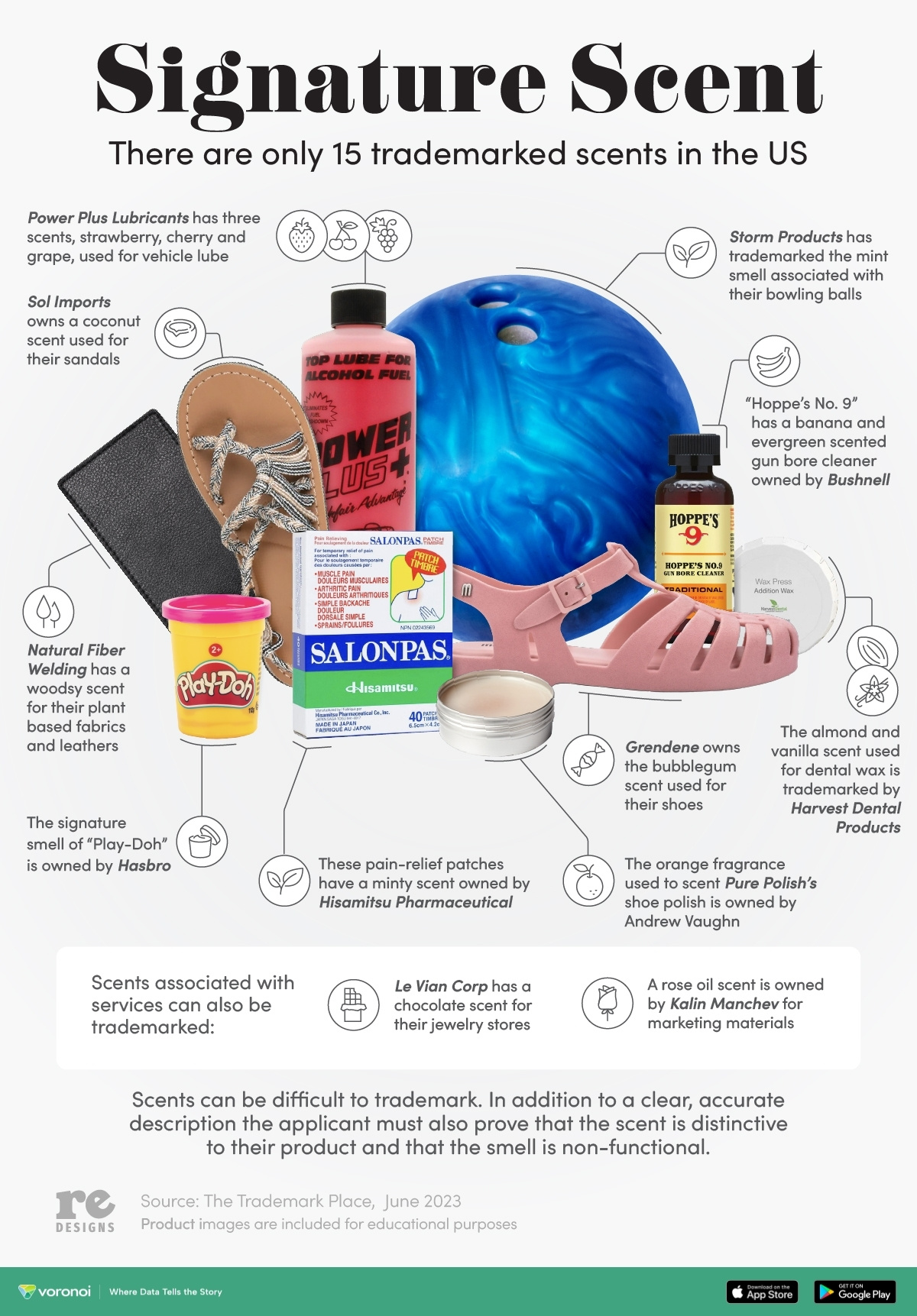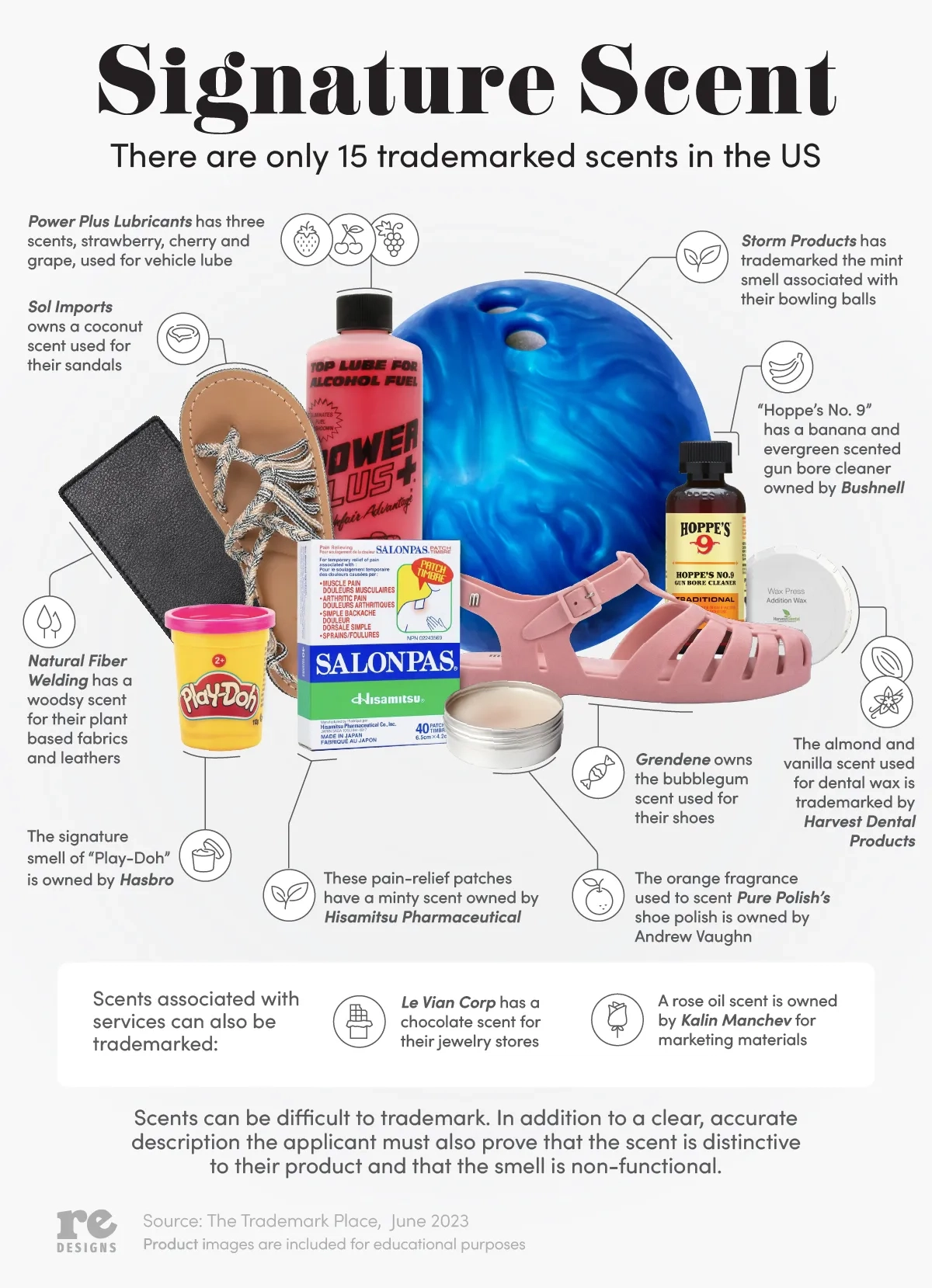Meet the Exclusive Club of Trademarked Scents in the U.S.
This was originally posted on our Voronoi app. Download the app for free on iOS or Android and discover incredible data-driven charts from a variety of trusted sources.
Imagine trying to trademark a color. Difficult, right? Now, think about what it would take to trademark a smell.
While technically possible, registering a scent trademark is a daunting endeavor. The act of trademarking a scent is surprisingly rare, with only a handful of successful registrations worldwide.
The graphic above, by Rosey Eason, is a visual summary of the 15 scents trademarked in the U.S. as of mid-2023.
The Two-Pronged Test
To succeed, a scent must meet two stringent criteria:
1. Non-Functionality: The smell can’t be the primary purpose of the product. A perfume or air freshener’s fragrance, for instance, is its core function and thus ineligible. (That said, a perfume’s composition can be patented.)
2. Distinctiveness: Consumers must unequivocally link the scent to a specific brand. Think of Play-Doh: its unique aroma has become synonymous with the brand itself.
Demonstrating these criteria demands substantial evidence, including data on consumer perception and association with the brand. This heavy burden of proof is one of the main reasons that the list of trademarked scents is so short. So then, what has been trademarked?
An Exclusive Club of Trademarked Scents
Play-Doh is perhaps the most well-known example of a trademarked scent. Play-Doh’s aroma is described as having a “sweet, slightly musky, vanilla fragrance with slight overtones of cherry” combined with “the smell of salted, wheat-based dough”. The parent company, Hasbro, claims that the scent has been in use since the mid-1950s.
Interestingly, many of the other trademarked aromas are used to brand more practical, industrial products. The list includes fruity smell used in vehicle lube, and a banana/evergreen scent used in gun bore cleaner.
The first ever U.S. “smell mark” was awarded to a company called OSEWEZ, which produced thread and yarn infused with the scent of plumeria blossoms. At the time, the company’s owner said, “We did this as a kind of gimmick. I never really thought we could do it.”


